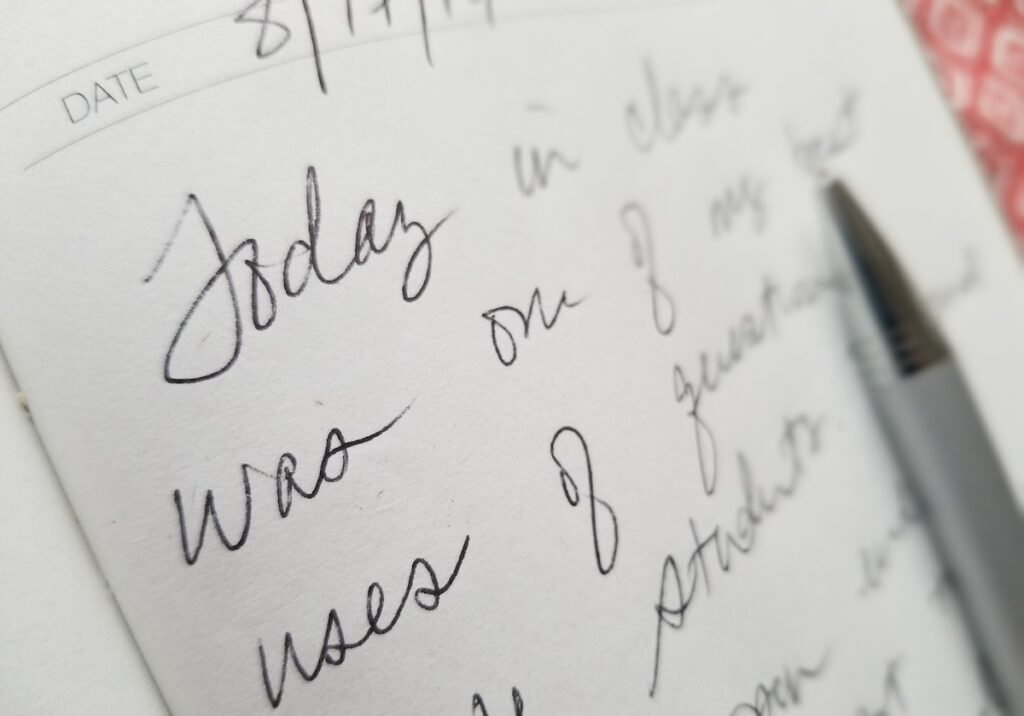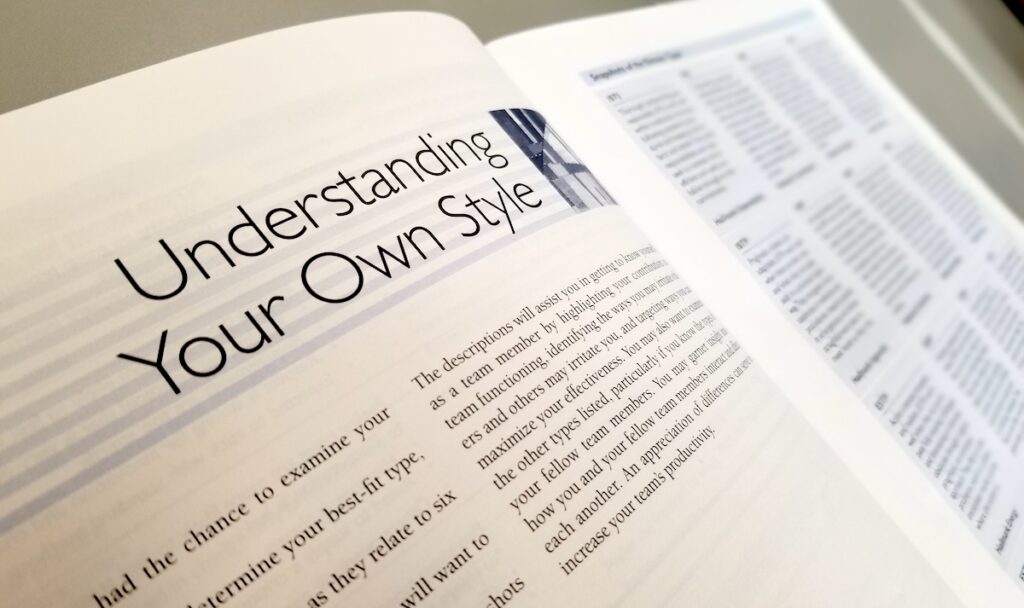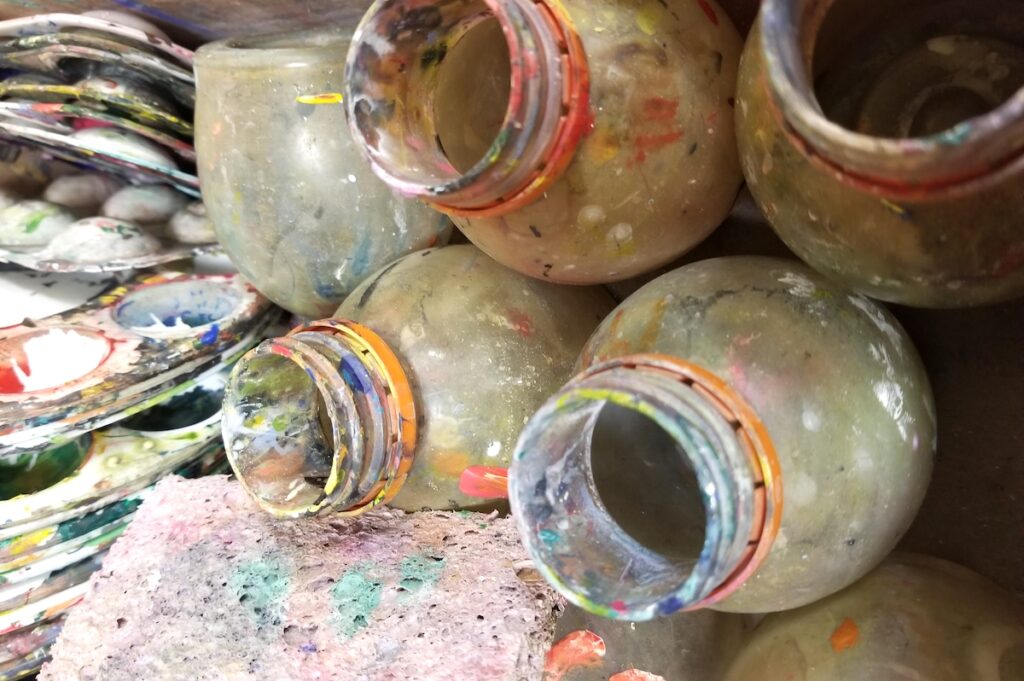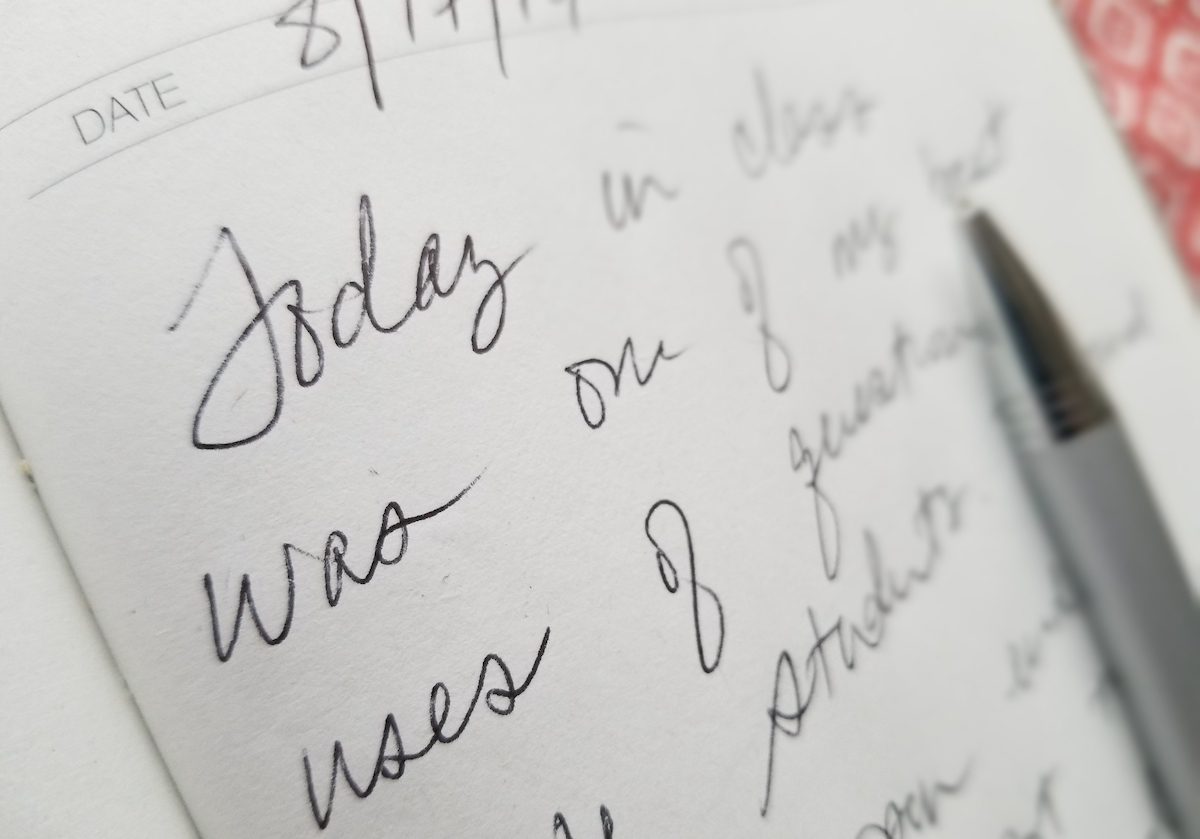Being a great art teacher throughout your career is a goal worth striving for, but a challenging one to accomplish in the ever-changing world of art education. Mediums, styles, and projects will evolve. Philosophies of art education will change, and goals in the classroom will shift.
So, what makes a great art teacher over time? It’s not what they do, but rather, how they think.
The great art teacher possesses a collection of traits that are applied regardless of the class they are teaching and mediums used. They are universal. These traits did not just show up in the great art teacher’s practice one day. Each trait was shaped and honed through intentional activities until it just became natural.
Great art teachers…
Possess A Growth Mindset
Highly effective teachers approach everything as a learning experience, even the dreaded professional development that, on the surface, has nothing to do with arts education. Their growth mindset is honed over time through reflection and self-assessment. The great art teacher enjoys learning and isn’t afraid to acknowledge failure or a gap in knowledge. Everything is an opportunity to learn something new to better their practice. These teachers tend to partner with their administration and colleagues because they understand they can learn from anyone. Great teachers are open to dialogue about improvement and instruction because they believe the feedback is only going to help them improve.

How to develop this trait? Building a system for daily reflection and analysis, like journaling, can help you develop a growth mindset. Use this time to identify what you learned on a particular day and how that will help you tomorrow. During professional development or observations with your administrator, try to identify one takeaway you can consider and try in the classroom.
Learn more: How a Growth Mindset Can Affect Your Teaching Career
Are Professional
Being a great art teacher is about more than helping students create art. The best art teachers understand they are colleagues, professional educators, part of a staff, working for an administration, and a representative for arts education. They accept the teaching position includes more than directly teaching students and approach all aspects of their work with integrity and high standards. This includes professional development, school duties, planning, and preparation. The great art teacher is a pleasure to work with and positively contributes to more areas than their classroom. This doesn’t mean they say “yes” to everything and are a people-pleaser. They challenge the status quo but do it appropriately. They advocate and question in an attempt to further the student and school. In short, they help others around them be better and are respected for their impact.
How to develop this trait? Reflect on your current status in the building and relationships with your colleagues and administration. Identify a colleague or administrator with whom you can improve your relationship and start that process. Also, identify at least one way you can improve your work in the non-teaching aspects of your role.
Learn more: How to Work with a Bad Boss
Are Aware
The great art teacher’s awareness influences their instruction and understanding of students. Self-awareness is critical in a job that’s driven by relationships and personal interactions. The great art teacher has an accurate sense of their strengths and weaknesses and personality. They know their preferred communication style and aware of how they typically ‘come off’ with students and colleagues. But it doesn’t stop there. The great art teacher’s awareness of their students makes them incredibly effective educators. They are aware of the students’ lives and the surrounding community and understand how those can impact student learning. The great art teacher knows how to navigate situations with the administration and parents because they are aware of potential circumstances that could be a factor. Overall, great art teachers have a keen sense of themselves and those around them to help them produce the best results.

How to develop this trait? Understanding yourself and how you’re perceived by others requires intentional activities to collect this information. Students can share their perspectives through anonymous surveys throughout the school year. Try asking questions about their comfort asking you for help, or how you make them feel in various situations. You can also ask a trusted colleague or administrator for feedback on your interactions in the building. Another approach outside of your school is completing a Myers-Briggs or similar personality test to better understand yourself and how you think, process, react, etc.
Learn more: Why You Need to Be Your Authentic Self (Ep. 122)
Are Balanced
When you put all of your eggs in one basket, it can be pretty devasting when they start to fall out or the basket drops. The great art teacher has a balanced approach to their work. They understand the demands at times will be great, but they don’t let it overtake them. They set limits, prioritize, and recognize that some goals will need to be long-term goals. Or recognize they can’t solve everything right now, and some problems will just have to wait. On a routine basis, highly effective teachers are taking care of themselves. After all, they understand they can’t take care of students if they aren’t taken care of. Self-care can be different for everyone and at different frequencies. The great art teacher knows what they need to be at their best at school. All of these factors help great art teachers perform at a high level throughout their careers.
How to develop this trait? Having balance in your life doesn’t always mean equal amounts of everything, and we all differ in what we need to feel balanced. Take an inventory for how you spend your time each month and be sure you have ways to disconnect from school. Seek to develop a way to feel joy, gratification, and success that does not include your work.
Learn more: 10 Ways to Better Balance Work and Life
Have Perspective
The great art teacher is willing to lose the battle to win the war. They understand not everything is worth fighting for, like dirty palettes, and some things just don’t matter in the end. The great art teacher keeps their priorities straight, which helps them stay focused and keep their cool as things ebb and flow. They don’t sweat the small stuff, which gives them plenty of energy to apply to the bigger things that do matter. It’s this perspective that also gains respect from colleagues and administrators. The great art teacher doesn’t go to battle often, so when they do, people listen.

How to develop this trait? Before acting, try to identify the source of your stress or frustration. Think about how that could be influencing how you feel. Also, consider the various options of a situation and think through the potential impacts of each decision. Ask yourself, is this where you want to spend your time and energy or is it better applied somewhere else?
Learn more: Art Advocacy: Learning to Speak the Language of Your Audience
Great art teachers are many things, but what keeps them great throughout a career is the way they think. It’s important to develop these traits to stay successful when everything else in education is changing. In addition to your technical skills or instruction, take time to further develop the various mindsets that drive your teaching. Most, if not all, of the professional development you experience, will focus on what to do. Now it’s time to balance that with honing your skills on the “how” of your work to take the next step in your teaching.
What are other traits that make a great art teacher?
How can we help new art teachers think in the right way?
Magazine articles and podcasts are opinions of professional education contributors and do not necessarily represent the position of the Art of Education University (AOEU) or its academic offerings. Contributors use terms in the way they are most often talked about in the scope of their educational experiences.





